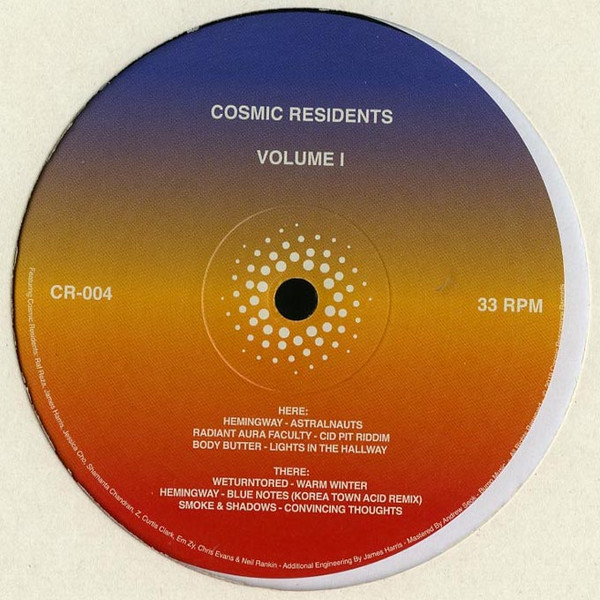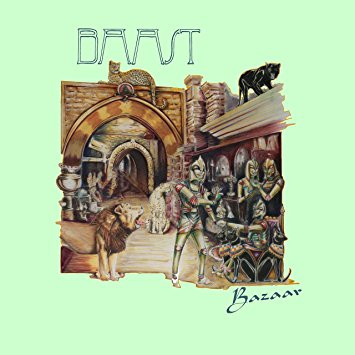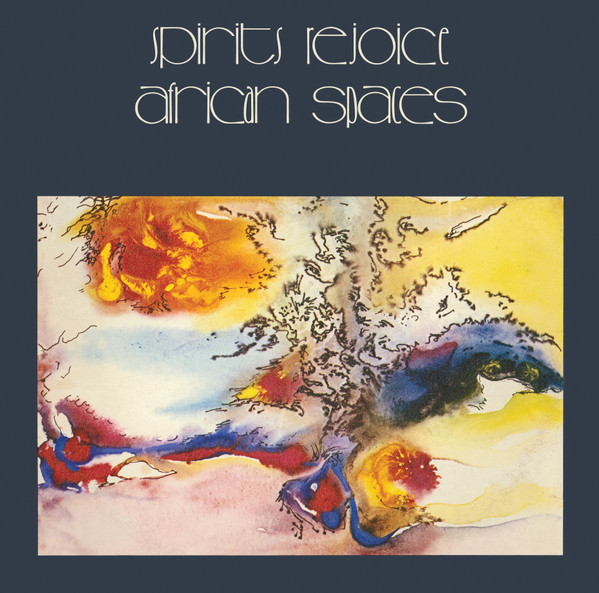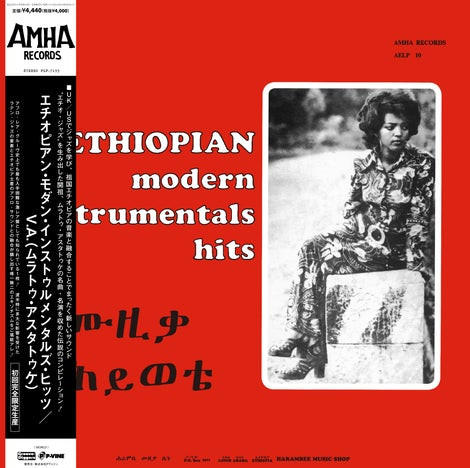ALL RIGHTS RESERVED © CG
Open today: 10:00 - 17:00
1 / 0
High Pulp
Mutual Attraction Vol. 2
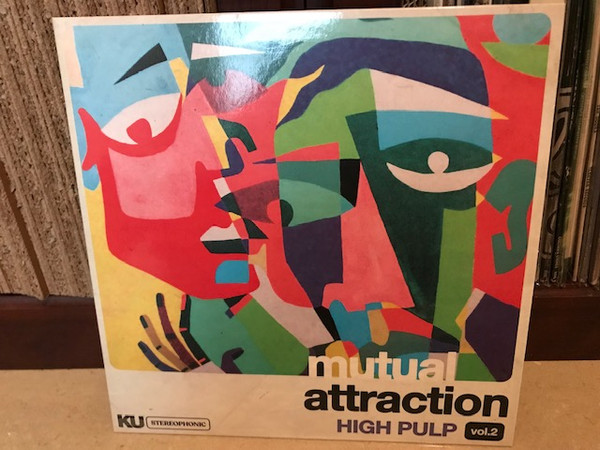

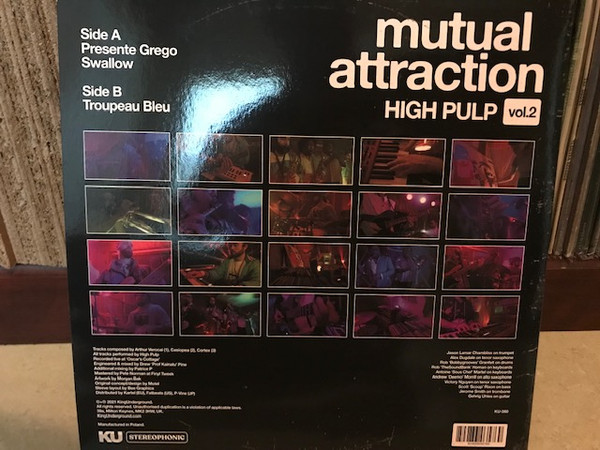
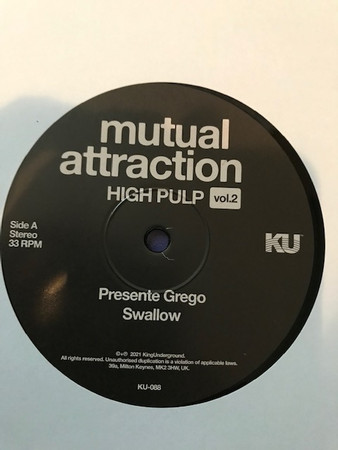
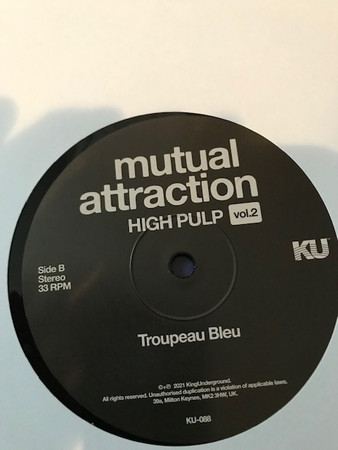

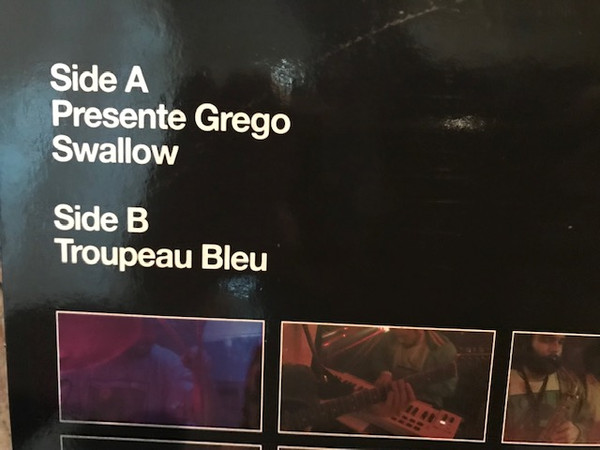
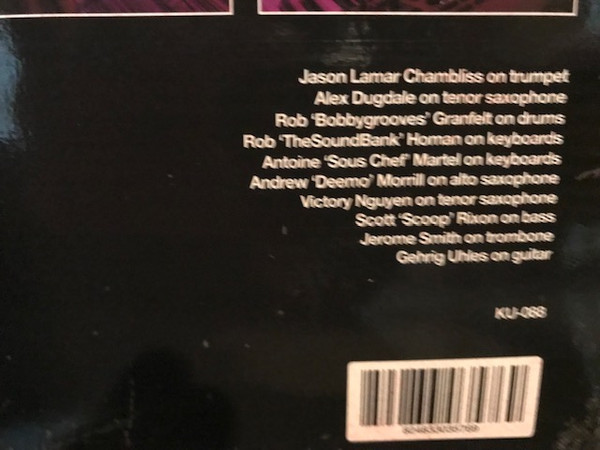
Artists
Labels
Catno
KU-088
Formats
1x Vinyl 12" 33 ⅓ RPM Limited Edition Stereo
Country
Release date
Jun 12, 2021
Genres
Styles
High Pulp - Mutual Attraction Vol. 2 | KingUnderground Records (KU-088)
High Pulp returns with a brand new installment of covers, on Mutual Attraction Vol 2. A spiritual jazz journey, interpreting arrangements by Arthur Verocai, Cortex, and Casiopea The 8-piece fusion band pays homage to tracks and artists that have woven themselves into their DNA.
$40*
*Taxes included, shipping price excluded
A1
Presente Grego
3:13
A2
Swallow
4:36
B
Tropeau Bleu
5:32
Other items you may like:
Baast returns with a follow-up to their cosmic jazz funk opus “Dimensions”, with another set of esoteric “Kosmiche Musik” on their new offering “Bazaar.” Channeling the same energy filtered through a more “worldly” vibe, the heavy focus is on polyrhythmic percussion producing a decidedly Middle Eastern flavor in a similar vein to Krautrock standouts Embryo and Passport.The brainchild of R. Scott Dibble and DJ Johnny Basil, Baast’s live performances are a mix of theatrical rock, jazz improv, and extended funk sojourns once they lock into a groove. 2016 has been a coming out party of sorts for once-underground hero DJ Johnny Basil. After a 20 year hiatus from producing music, hunkering down and delving deep into his esoteric studies while amassing one of the more impressive record collections focused on library music, his ascension has been ignited by his exposure to a young and eager audience as a tour DJ for cult surf-rock crusaders The Growlers. Leaving crowds mesmerized throwing down hard Disco and Funk while exploring the groove alongside them gyrating and slithering shirtless on stage. Drawing a visually striking resemblance to Iggy Pop, and sartorially decked in ‘70s vintage regalia, he’s inspired a write-up from Vice outlet Thump dubbing him “The Man You Wish You Were”, putting him in the running as a real-life “Most Interesting Man In The World”.Fresh from being named by the OC weekly staff as “Best Local Celebrity of 2016” and loaded with several new projects outside of Baast including his recently released excursion into Nu-Disco with the aptly named Basil & Rogers and Sleaze/Glam Rock outfit Kandi Jones, as well as several upcoming appearances in music videos and fashion shoots, DJ Johnny Basil’s long-overdue “shine” is only destined to burn that much brighter.
LITA: ...Ethiopians’ deep-seated ethiocentrism, the legacy of a thousand years of history, has contributed in no small way to their music’s strong national identity, particularly impervious to any African influences. Latin influences, so pervasive in the great musical centers of West Africa and the Congo, have been similarly rebuffed, despite the brilliant attempts of a musician like Mulatu Astatke. He was the first and for a long time the only Ethiopian to have studied music abroad (England and USA). In the late ‘60s, he brought back ’ethio-jazz’, as well as a passion for Latin rhythms that was not readily shared by the Ethiopian audience. As early as 1966, he released a single and two LPs in the US entitled Afro-Latin Soul (and a third LP, Mulatu of Ethiopia in 1972), with his Ethiopian Quintet composed of American and Latin-American musicians (Worthy Records). That was three years before Fela’s first American tour and six years prior to Manu Dibango’s key breakthrough with the release of Soul Makossa in the Western ‘pre-World music’ market. All this goes to show how much the history of the African continent’s musical modernity should be reconsidered in light of the Ethiopian adventure, even though this lone spark bore little relation, musically or ideologically to the musical revolutions initiated most notably by Ghanian highlife, South African jazz, Congolese rumba or, much later on, by Fela.
Follow us
Browse
HomeCatalogueLoginServices
ShippingTerms and conditions

